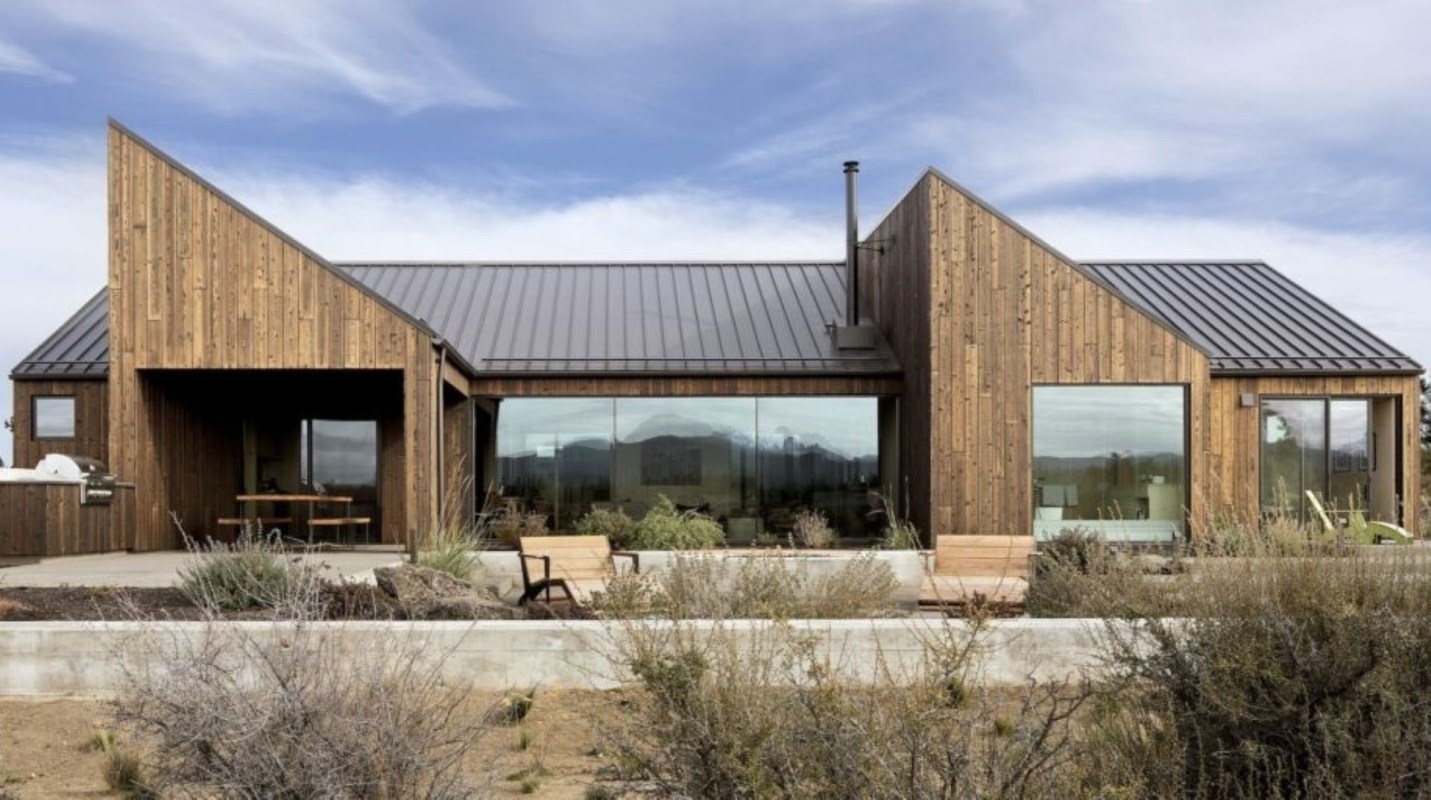A house built in the high desert of Oregon and featured in Sunset magazine broke ground in more ways than one recently.
Upon its completion, the Octothorpe House, designed by Mork-Ulnes architects, became one of the first homes in the United States to be made entirely of cross-laminated timber (CLT). The architects told Sunset that the owners reached out to them with the idea of a home that was environmentally progressive and that they chose to use CLT due to its sustainability.
CLT is a wood product made of several layers of lumber arranged crosswise, glued together, and hydraulically pressed for strength. The piece of lumber you get from this process is as strong as concrete but five times lighter and much better for the environment.
Fair Planet reports that concrete, iron, and steel production accounts for 27% of the world's industrial harmful carbon pollution and that concrete alone, the most used building material on the planet, accounts for over 7% of carbon pollution worldwide.
On the other hand, CLT is easy to produce and can be pre-cut offsite. This creates much less construction waste, and what isn't used can be recycled right at the factory that makes it.
While concrete will still have to be used for foundations, CLT can be used for flooring, walls, and even ceilings. According to an article in the University of Washington Magazine, buildings made with CLT could result in a 25% to 30% reduction in pollution that causes planetary overheating compared to a similar building made of traditional materials.
Aside from greatly reducing the need for concrete, CLT benefits the climate by locking in carbon, and its lightweight and fire-resistant properties make it ideal for taller and commercial buildings.
At the 2021 World Economic Forum's Sustainable Development Impact Summit, Lisa Podesto, senior business development manager at Lendlease, a global real estate and investment company that has built several CLT structures, said, "The beauty of this new product type — mass timber — is that it's competing in a market space with materials that timber couldn't compete with in prior building generations … It's opening opportunities to offset carbon in a different landscape.
"The positive effects of the material were also touted by Susan Jones, a founding architect of the Seattle-based firm Atelierjones, when she said, "It's important to use CLT and demonstrate the benefits of building more sustainably."
Join our free newsletter for easy tips to save more, waste less, and help yourself while helping the planet.









